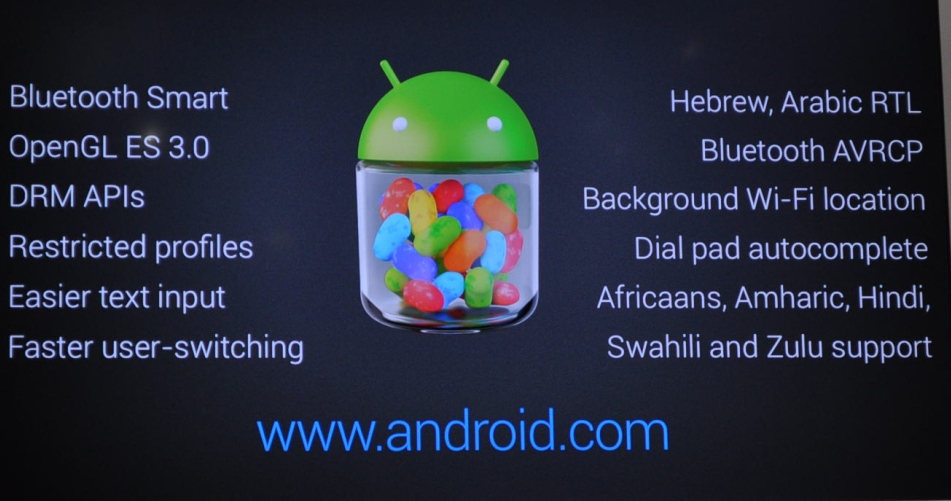iOS 7 vs Android 4.3: Which OS is best for business?
With Google and Apple both rolling out new mobile operating system updates, we take a look at their business benefits.


Apple is readying its iOS platform, while Google recently announced the imminent arrival of Android 4.3 and has already started rolling it out to some devices. But which of these two mobile operating systems should your business be backing?
Android 4.3: key features
Although Google is only pushing Android 4.3 out to Google Nexus branded devices at the moment, other manufacturers will start rolling it out soon.
So far only Sony has formally announced plans to launch Android 4.3 on its Xperia Z, Xperia Z Ultra, Xperia Tablet Z devices and a handful of lower-end models, but we assume HTC and Samsung will be following suit in the not too distant future.
Android 4.3 is designed as an interim update before Android 5.0 Key Lime Pie arrives and as such there are few big tweaks.

The biggest new feature is Restricted Profiles. This allows you to restrict certain users from accessing apps and content on a device.
For example, if two departments in a company share a device (say, a Nexus 7 tablet), they will each have their own profile on the device and will only have access to certain apps and content.
Get the ITPro daily newsletter
Sign up today and you will receive a free copy of our Future Focus 2025 report - the leading guidance on AI, cybersecurity and other IT challenges as per 700+ senior executives
The tablet owner or an administrator will be responsible for dictating the apps and content other users can access, and will also be the only one who can make changes to this.
Although Google is only pushing Android 4.3 out to Google Nexus branded devices at the moment, other manufacturers will start rolling it out soon.
Developers will eventually be able to use this feature in apps to set restrictions that could stop certain in-app purchases being made, for example.
Google has also introduced faster user switching, meaning it takes just seconds to swap between user accounts to access the apps and content you need.
App Ops is a new menu in Android 4.3's settings that lets you disable certain app permissions. For instance, if you want to stop apps from being able to track your location or use contact data.
This particular feature is also helpful if you're trying to find out when the app last carried its listed tasks, which - in turn - could help users work out what is causing battery drain or security breaches.
Android 4.3 connectivity improvements
Wireless displays are supported with Android 4.3, but only on the Nexus 7 2013 and Nexus 10 at the moment. This will allow users to wirelessly project the device's screen to their TV.
Although it's only supported on these two tablets as the moment, it's expected to be made available on devices that support Miracast shortly.
Another tweak in Android 4.3 is that Wi-Fi will always be working in the background, even if it's turned off, so Google can track your location and improve the accuracy of searches.
Android 4.3 also features Bluetooth Smart (Bluetooth Low Energy) connectivity, which lets users connect a huge number of devices.
Before Android 4.3, Google was using Bluetooth 4.0, which didn't support low-energy peripherals like fitness and location trackers. Introducing Bluetooth Smart will allow developers to integrate a much wider range of low-power Bluetooth peripherals into their apps.
Other notable additions for developers include OpenGL ES 3.0 graphic support. This will enhance any gaming or high-graphic dependency apps, making them a lot smoother and more detailed for the end user.
Google has also brought new digital rights management (DRM) tools, allowing developers to integrate DRM content into their apps.

Clare is the founder of Blue Cactus Digital, a digital marketing company that helps ethical and sustainability-focused businesses grow their customer base.
Prior to becoming a marketer, Clare was a journalist, working at a range of mobile device-focused outlets including Know Your Mobile before moving into freelance life.
As a freelance writer, she drew on her expertise in mobility to write features and guides for ITPro, as well as regularly writing news stories on a wide range of topics.
-
 Meta just revived plans to train AI models using European user data
Meta just revived plans to train AI models using European user dataNews Meta has confirmed plans to train AI models using European users’ public content and conversations with its Meta AI chatbot.
By Nicole Kobie
-
 AI is helping bad bots take over the internet
AI is helping bad bots take over the internetNews Automated bot traffic has surpassed human activity for the first time in a decade, according to Imperva
By Bobby Hellard